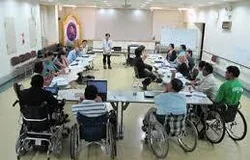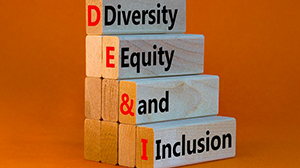Daniel Davidson, MD, MBA, DBA, PHD
Introduction:
The convergence of technology and philanthropy has led to a revolution in philanthropy in a time characterized by rapid technical growth. The way charitable organizations function and interact with their supporters is being positively altered by technology, which is influencing everything from social media outreach to data analytics and fundraising platforms. In this article, we explore the various ways that technology is changing the charitable sector and enabling institutions to have a bigger influence.
Digital Fundraising Platforms
In the past, direct mail campaigns, in-person solicitations, and live events were frequently used in fundraising efforts. Digital fundraising platforms have become effective instruments for increasing the impact and reach of charitable activities, even while traditional techniques are still viable.
Online spaces for creating fundraising campaigns for a variety of causes are made available to people and groups by digital fundraising platforms including GoFundMe, JustGiving, Kickstarter, and Crowdfunding by Indiegogo. With only a few clicks, contributors can easily contribute money thanks to these platforms, which streamline the donation procedure.
Accessibility:
Individuals and organizations can reach a worldwide audience by using digital fundraising tools, which are available to anybody with an internet connection. The global reach of donors allows for the expansion of prospective supporters and the dismantling of geographical restrictions.
Easy to Use:
The creation and administration of fundraising campaigns is made simpler by the user-friendly interfaces that these platforms provide. It’s simple for users to create customized campaigns, discuss their experiences, and keep track of donations in real time.
Social Sharing:
To increase the reach of fundraising efforts, digital fundraising platforms make use of the strength of social media and online networks. Social media platforms allow campaign creators to post their updates and tales, inspiring friends, family, and supporters to contribute and spread the word.
Crowdsourcing:
A lot of online fundraising sites use a technique called crowdsourcing, in which a number of individuals provide little contributions to a larger cause. By combining resources with others, even modest contributions can have a significant impact, democratizing fundraising.
Transparency:
Digital fundraising platforms usually offer transparency through the display of fundraising objectives, the status of those objectives, and details regarding the allocation of cash. Increased support for philanthropic projects is encouraged by this transparency, which fosters donor trust.
Flexibility:
The kinds of campaigns that may be built with digital fundraising platforms are abundant. Individuals and groups can customize their campaigns to specific causes and aims, whether they are raising money for creative initiatives, medical expenditures, disaster relief, education, or other purposes.
Data-Driven Decision Making
Making strategic and educated judgments based on data analysis and insights as opposed to depending exclusively on gut feeling or subjective opinion is known as “data-driven decision making.” Data-driven decision making, as it pertains to charities and nonprofit organizations, is using data to evaluate performance, spot patterns, and gauge impact in order to inform organizational strategy and resource allocation.
Data Gathering:
Gathering pertinent information from a variety of sources is the initial stage in making decisions based on data. This could include beneficiary demographics, program results, fundraising analytics, and donor information. Charities can now collect data from online donations, social media interactions, website traffic, and other digital channels thanks to modern technology.
Data Analysis:
In order to derive significant insights from the obtained data, analysis is required. Patterns, correlations, and trends in the data are found using data analysis techniques like statistical analysis, data mining, and predictive modeling. Charities can process vast amounts of data and extract useful insights more quickly and easily with the use of sophisticated analytics software and tools.
Developing Insights:
Drawing conclusions from the data analysis is the next stage. These insights offer insightful information regarding program impact, campaign efficacy, donor behavior, and areas that could use improvement. Data analysis, for instance, may show which initiatives are producing the intended results, which demographic groups respond to appeals the best, or which fundraising tactics are most effective.
Making Decisions:
With the knowledge gained from data analysis, nonprofit organizations are better able to decide how best to allocate their resources and run their operations and initiatives. For example, based on a program’s shown efficacy, they might choose to increase funding for it, modify their fundraising tactics to focus on particular contributor categories, or streamline their internal operations to increase productivity.
Monitoring and Assessment:
Making decisions based on data necessitates constant observation and assessment of the results. Key performance indicators (KPIs) and metrics are used by charities to monitor target achievement, assess the effectiveness of initiatives, and pinpoint areas that could require revisions. Charities can remain flexible and adaptable to changing conditions by conducting regular evaluations.
Iterative Improvement:
A culture of continuous improvement is a component of data-driven decision making, wherein businesses learn from their triumphs and failures to gradually hone their tactics. Long-term operational optimization and impact maximization can be achieved by charity through feedback collection, analysis, and method iterations.
Social Media and Digital Marketing
In order to connect with target audiences, develop brand awareness, encourage participation, and ultimately accomplish corporate goals, social media and digital marketing are essential elements of contemporary marketing strategies that make use of online platforms and technologies. A summary of each is given below:
Social Media Marketing:
Using social media sites like Facebook, Instagram, Twitter, LinkedIn, TikTok, and others to market goods, services, or content while interacting with customers is known as social media marketing. Some essential components of social media marketing are:
The process of creating engaging and shareable content that is appropriate for each platform and audience, including text, photos, videos, and infographics.
Community Engagement:
Using direct messages, shares, comments, and likes to actively engage with followers in order to develop ties and increase brand loyalty.
Audience targeting is the process of delivering customized content and advertisements to users based on their location, interests, and demographics by using platform-specific targeting choices.
Influencer Partnerships:
Increasing reach, credibility, and engagement by partnering with thought leaders and influencers in pertinent niches.
Paid Advertising:
Using targeted social media ads to attract a wider audience, improve website traffic, produce leads, and boost conversions.
Analytics and measurement:
Monitoring important performance indicators (KPIs) to assess the success of social media initiatives and make necessary changes to strategy, such as reach, engagement, click-through rates, conversions, and ROI.
Digital marketing:
This type of online marketing includes more than just social media. It also includes pay-per-click (PPC) advertising, email marketing, content marketing, search engine optimization (SEO), affiliate marketing, and more. Among the essential elements of digital marketing are:
Optimizing a website’s content, structure, and technological elements to increase its organic visibility and ranks on search engine results pages (SERPs) is known as search engine optimization, or SEO.
Email Marketing :
IT is the practice of sending subscribers customized and targeted emails with the goal of fostering leads, promoting goods and services, increasing traffic, and cultivating client connections.
Content Marketing :
IT is the process of producing interesting, educational, and thought-provoking content (such as blog posts, articles, videos, and podcasts) in order to draw in target audiences, establish thought leadership, and increase conversion rates.
Pay-Per-Click (PPC) Advertising:
Using cost-per-click (CPC) or cost-per-impression (CPM) models, paid advertising campaigns are run on search engines (like Google Ads) and other platforms (like display networks, social media) to drive targeted traffic, leads, and sales.
Analytics & Data Analysis:
Tracking performance, calculating return on investment, and improving marketing plans are all achieved by tracking and analyzing data from a variety of digital marketing channels and technologies (such as Google Analytics and social media insights).
Marketing automation is the process of streamlining procedures, automating tedious tasks, and delivering tailored marketing messages widely and across a variety of media.
Enhancing Transparency and Accountability
Increasing accountability and transparency in the charitable sector entails making sure that nonprofits are open, honest, and dedicated to prudent resource management. It’s about giving stakeholders clear, understandable information about the organization’s operations and impact, being open and honest about how donations are utilized, and exhibiting accountability for outcomes.
Donation tracking:
From the point of origin to the distribution of funds, technology—especially blockchain technology—can offer a transparent and unchangeable record of contributions. Donors can track their contributions through every stage of the process with blockchain-based systems, which lowers the possibility of fraud or poor management and guarantees that money are spent as intended.
Financial Transparency:
Real-time financial information and transparency can be obtained by charitable organizations through the use of technology. Stakeholders may have access to comprehensive financial accounts that include income, expenses, and budgetary allocations using online platforms and portals. Charities can show their dedication to fiscal prudence and gain supporters’ trust by providing easy access to financial information.
Impact measurement:
Charities can gather, examine, and publish information about their results and impact thanks to technology. High-tech analytics tools are able to analyze goals’ progress, evaluate the success of interventions and programs, and pinpoint areas that still need work. Charities can show accountability for results and provide valuable information for strategic decision-making by measuring and sharing their impact.
Open Communication:
Digital and social media platforms give nonprofits a way to interact directly with stakeholders and promote open communication. Websites, blogs, and social media accounts are useful tools for charities to disseminate updates, tales, and perspectives about the work they do. Charities can enhance their reputation and fortify their connections with stakeholders by proactively interacting with supporters and candidly answering their queries and grievances.
Governance and Compliance:
In philanthropic organizations, technology can improve governance procedures and expedite compliance processes. Charities can assure adherence to ethical standards and best practices, manage complex regulatory obligations, and maintain correct records with the use of online compliance solutions. Charity organisations can reduce risks and maintain public trust by encouraging accountability and transparency at all levels of their operations.
Tech-Based Solutions for Inclusion
“Tech-Based Solutions for Inclusion” is the term used to describe how technology may be used to promote opportunities and remove obstacles for people and communities who may be facing social, economic, or geographic difficulties. These solutions seek to guarantee that everyone may take use of the opportunities provided by technological breakthroughs and participate fully in society, regardless of background or condition. Here are a few instances of tech-based inclusion strategies:
Internet connectivity:
Encouraging underprivileged communities to have better access to the internet through programs like satellite internet, public Wi-Fi networks, and affordable mobile data plans. People may now access internet job possibilities, educational materials, and basic services thanks to increased connection.
Programs for Digital Literacy:
Providing instruction and training to improve the digital literacy of underserved groups, such as the elderly, refugees, and individuals with disabilities. These courses enable people to use digital tools and platforms efficiently, which promotes more engagement in the digital economy.
The creation and promotion of technology-related goods and services that are usable by people with disabilities is known as accessible technology. This comprises adapted devices that let persons with impairments use computers, cellphones, and other digital devices on their own, screen readers, and speech recognition software.
E-government services include the use of digital channels to obtain government services, like benefit applications, tax payments, and healthcare service access. For individuals, especially those who reside in remote or underserved areas, e-government services increase accessibility, efficiency, and convenience.
Telehealth or telemedicine:
Delivering healthcare remotely via video consultations, telemedicine platforms, and mobile health apps is known as telehealth or telemedicine. By eliminating the need for travel, telemedicine lowers barriers to healthcare access by allowing residents of remote or rural areas to obtain specialized knowledge and medical care.
Possibilities for Remote Work:
Encouraging freelance work and remote work using digital platforms and teamwork technologies. Without having to move physically, those who live in remote or underdeveloped places can now access jobs, make money, and join the global economy through remote work.
Conclusion:
There are countless opportunities for tech-driven charity as long as it keeps innovating and evolving. Technology is completely changing the way charities function, interact with their supporters, and effect positive change in the world. Examples of these innovations include digital fundraising platforms, data analytics, social media outreach, and blockchain transparency. Charities may increase their impact, improve accountability and transparency, and build a more inclusive and equitable society by utilizing the power of technology. Let’s use the opportunity presented by tech-driven philanthropy to create a more compassionate and optimistic society for future generations.







